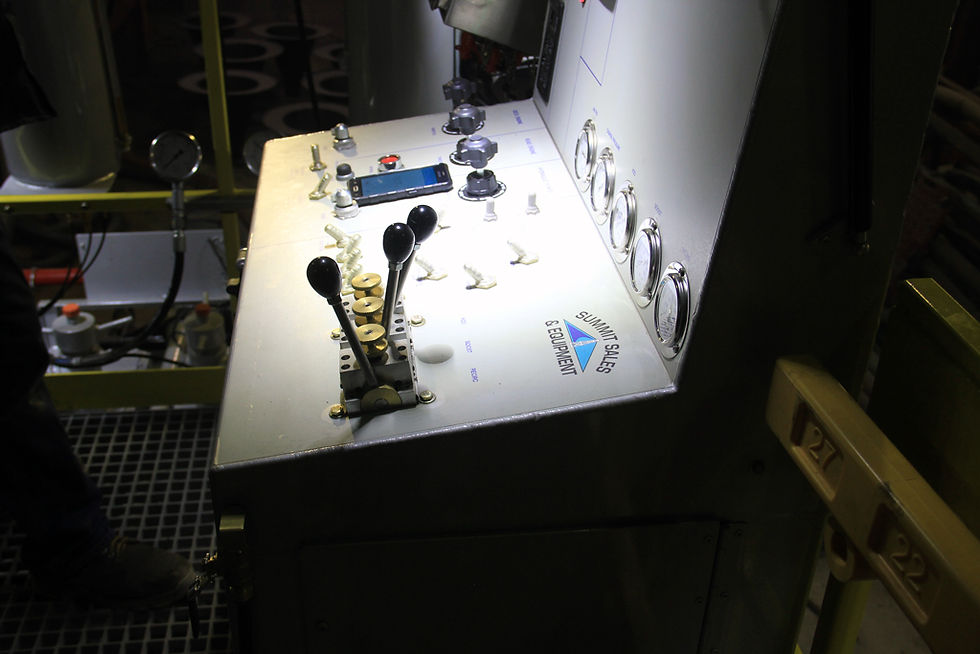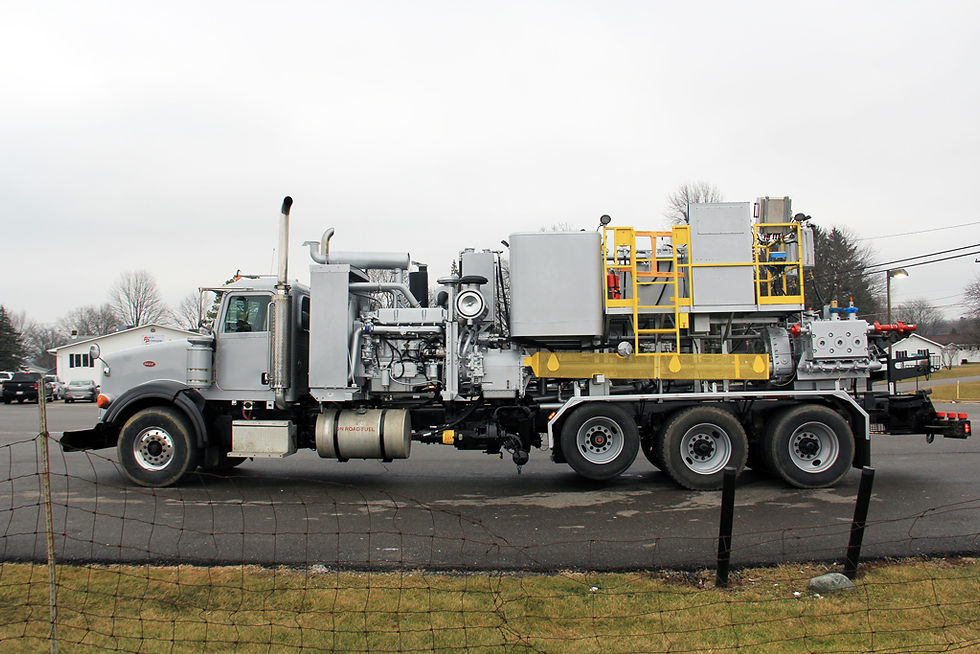Push It to the Limit
- Market Coordinator

- Feb 21, 2018
- 4 min read
Updated: Apr 20, 2018
Most of the space on this blog is devoted to works in progress and, as things generally go, early on in that progress. However, this week I had a chance to get a glimpse of the other side: a finished body load double being tested. I'll be honest, I was pretty hyped (as the kids say) for it. For as many photos as I've taken of these things so far in my time at Summit Sales & Equipment, I've never actually seen one running.
First, let's set the scene.

Okay, the scene is a little south of glamorous, I'll admit. But there's a good reason that we go a few miles away from our main complex to test, as you'll see in this video. Spoiler alert/legally-required disclosure: you may want to turn your volume all the way down at first and lean into this one gradually. Those of us on site have to wear ear plugs, and I don't want you to damage your hearing because you still had your volume at jamming out to Bruno Mars levels.
That's David, by the way. He's running these tests, if that wasn't obvious, so you'll see him a bunch more in this post.
There are a few things I want to convey about the atmosphere in this place. The noise is the obvious one. It's also rather warm - you can see that David is wearing a dri-fit polo on a cold, rainy February day in Ohio. That'll happen when you're running a couple giant diesel engines and a bunch of pumps. To help with that problem, we also have...

...very large fans. So there's definitely a bit of a wind factor as you get close to the truck. A lot going on, basically, with at least four senses involved. Maybe even five, my coffee tasted like exhaust when I got back to my desk to write this post.
With all of that out the way, let's talk about the test itself. On a high level, it's not overly complicated, just tedious. There certainly isn't that "POW" moment, followed by a mutilated watermelon, like you often get in a restraint test. Basically, we hook it up, fire it up, and see what happens. Here's a quick walkaround so you can catch a bit of that.
It might not look like much from a distance, but there's plenty of movement as you get up close, and not just from the drive shafts.
From that point, there's a lot of measuring.

Then writing stuff down.

Then some more measuring.

And some more writing.

Yes, David changed clothes. I'm not playing around about the writing part.
So what are we measuring and writing down? Lots of things. One of the big ones is temperature - obviously and as I mentioned, the engines (don't forget that in addition to the one moving the pumps, there's the one that drives the truck itself, generally called the "road engine") and pumps give off quite a bit of heat, but hopefully not too much (the thing David is using in the photos above is an infrared thermometer, which is not something I knew existed before today). Horsepower and pressure are two of the other major categories. Obviously there's a ton of detail within those categories, with things like the lube temperature and pressure of the triplex pumps and the bearing temperatures of each centrifugal pump among the line items.

Seriously, that's the packet David's using. It's literally just line after line of very specific measurements and calculations for the different pieces, fluids, and situations, to be taken at intervals of 10, 20, and 30 minutes. There are a host of other more visual safety items as well, like checking fire extinguishers, the presence of warning labels, the adequacy of lighting, and the integrity of the electrical wiring. Bring an energy drink or two if you ever have to do it. But hey, it's vitally important that all of these things be up to both our standards and the customer's specifications, so we're very thorough about it.

Most of the measurements are actually collected not by infrared thermometers, but from the on-board data acquisition system located on the platform. We're actually just timing out our intervals with that phone. It's almost like you could do this at home.
In addition to this being the first time I'd ever seen one of these beasts running, it was also the first time I'd been up on a platform, so I was irrationally excited to take video of dirty water churning through tanks and had to squeeze it in here, even though it breaks up this post's flow.
Anyway, I'm happy to report that after a process that included parts of three days (some initial setup and prep work on day one, then two full days to actually conduct the test), everything passed with flying colors and we'll have the finished truck out to the customer very soon!

Hope you enjoyed getting a little bit of a look behind the scenes of our long, but interesting testing process. Next time, we'll be back to our regularly scheduled programming of things that would fail tests because they aren't done yet.
Happy hump day, Mike!





Comments